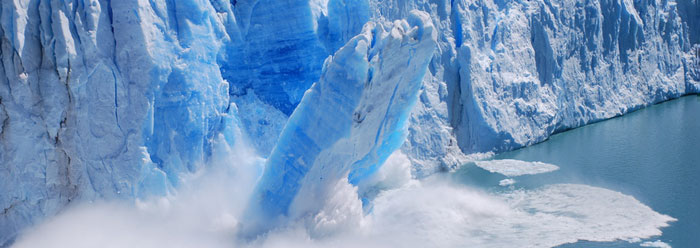Many geological processes can happen much more quickly than is conventionally thought. For instance, mainstream science believes that coal, diamonds, and oil require vast amounts of time to develop, when they in fact can form in under a year.1, 2 Sedimentary rock and fossil formation require only days or months in the right conditions.3 And broad tectonic plate movements could have (and indeed must have) happened in under a year.4
Now the rapid melt-back of glaciers can be added to the list. University of Buffalo geologist Jason Briner found that certain glaciers “exhibit rapid fluctuations in speed and position.” He and his team based their estimate on rock samples taken from a fjord that drained North American ice sheets. Briner said in a UB press release that “the lion's share of the retreat occurred in a geologic instant―probably within as little as a few hundred years.”5
Rapid melting contrasts with the standard evolutionary story, which holds that the most recent Ice Age experienced melt-back between 20,000 and 5,000 years ago. Evolutionary glaciologists interpret certain debris layering patterns as indicating glacier melting and re-growth that occurred over thousands of years. Creation researchers have instead interpreted these same features as evidence of annual melt-back episodes. If glaciers can melt rapidly, then the longstanding creation explanation is more feasible than the evolutionary one.
Briner’s observations confirm creationist Ice Age studies. It is most reasonable, given the Bible’s history, that there was a single Ice Age, and that the largest extent of ice lasted for only hundreds of years, beginning around 2400 BC. It is possible that the period of time wherein the “lion’s share” of melting apparently occurred was the only time that it occurred. The remaining thousands of years would therefore be a product not of data, but of the assumption of deep time.
As in the rapid formation of coal, oil, and mud rocks, if the conditions are right, icebergs melt fast—just like the creation model holds/.6 http://www.icr.org/article/glaciers-can-melt-geologic-instant
References
- Snelling, A. A. 2007. The Rapid Ascent of Basalt Magmas. Acts & Facts. 36 (8): 10-11.
- Larsen, J. 1985. From lignin to coal in a year. Nature. 314 (6009): 316.
- Macquaker, J. H. S. and K. M. Bohacs. 2007. On the Accumulation of Mud. Science. 318 (5857): 1734-1735.
- Baumgardner, J. 2003. Catastrophic Plate Tectonics: The Physics Behind the Genesis Flood. Proceedings of the Fifth International Conference on Creationism. Pittsburgh, PA: Creation Science Fellowship, 113-126.
- Ice Sheets Can Retreat "In a Geologic Instant," Study of Prehistoric Glacier Shows. University at Buffalo press release, June 21, 2009, reporting research published in Briner, J. P., A. C. Bini and R. S. Anderson. 2009. Rapid early Holocene retreat of a Laurentide outlet glacier through an Arctic fjord. Nature Geoscience. 2 (7): 496-499.]
- Oard, M. 1987. The Ice Age and the Genesis Flood. Acts & Facts. 16 (6). See also Hoesch, W. 2007. Galloping Glaciers. Acts & Facts. 36 (12): 14.
* Mr. Thomas is Science Writer at the Institute for Creation Research.
